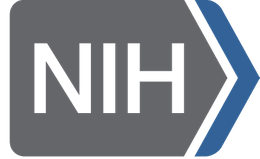Find Out if You Have Diabetes
Some who are at risk have no signs of diabetes at all
Did you know that many people who have diabetes don't know it?
Diabetes means you have too much glucose in your blood. Glucose is a form of sugar your body uses for energy. Your blood always has some glucose in it. But too much glucose in your blood can damage your body over time.
Your body needs the hormone insulin to use glucose for energy. If your body doesn't make enough insulin or doesn't use insulin properly, you may develop diabetes.
Diabetes can cause heart attacks, strokes, blindness, kidney failure, and other serious health problems. But you can prevent health problems by keeping your blood glucose, blood pressure, and cholesterol under control.
What Is Type 2 Diabetes?
Type 2 diabetes is the most common type of diabetes. It occurs because the body doesn't use insulin properly, a condition called insulin resistance. Over time, the cells that produce insulin cannot keep up with the body's needs and diabetes develops.
You are more likely to get type 2 diabetes if you:
- Are age 45 or older.
- Are overweight.
- Are not physically active.
- Have a family history of diabetes.
- Have high blood pressure or high cholesterol.
- Had gestational diabetes — diabetes during pregnancy — or gave birth to a baby weighing more than 9 pounds.
- Have blood glucose levels that are higher than normal but not high enough to be called diabetes.
- Are African-American, American Indian, Asian-American, Pacific Islander, or Hispanic/Latino.
- Have polycystic ovary syndrome.
- Have dark, thick, velvety skin around your neck or in your armpits.
- Have blood vessel problems affecting your heart, brain or legs.
How Do I Know If I Have Diabetes?
Your doctor can test your blood. Some people have signs of diabetes, such as being thirsty, having to urinate often or feeling tired. But some people have no signs at all.
How Can I Take Care Of My Diabetes?
You can take care of your diabetes by reaching your targets for blood glucose, blood pressure, and cholesterol. Talk with your doctor about your targets and how to reach them. Here are some ways to reach your targets:
- Make wise food choices. Choose fruits, vegetables, whole grains, fish, lean meats, and low-fat dairy products. Learn when to eat and how much to have.
- Be physically active for 30 to 60 minutes every day. For example, take a walk each day.
- Reach and stay at a healthy weight. Making wise food choices and being active can help you control your weight.
- Take your medicines as prescribed and keep taking them, even after you've reached your targets.
- Ask your doctor if you should take aspirin to prevent a heart attack or stroke.
- If you smoke, quit.
Where Can I Get More Information About Diabetes?
National Diabetes Information Clearinghouse
1 Information Way
Bethesda, MD 20892–3560
Phone: (800) 860–8747
TTY: (866) 569–1162
Fax: (703) 738–4929
Email: [email protected]
Adapted from "Type 2 Diabetes What You Need to Know," a publication of the National Institute of Diabetes and Digestive and Kidney Diseases (NIDDK), National Institutes of Health (NIH).

The National Institutes of Health, a part of the U.S. Department of Health and Human Services, is the nation's medical research agency — making important discoveries that improve health and save lives. NIH is the largest single source of financing for medical research in the world, seeking new ways to cure disease, alleviate suffering and prevent illness. By providing the evidence base for health decisions by individuals and their clinicians, NIH is empowering Americans to embrace healthy living through informed decision-making. NIH is made up of 27 institutes and centers, each with a specific research agenda, focusing on stages of life, like aging or child health, or particular diseases or body systems.

